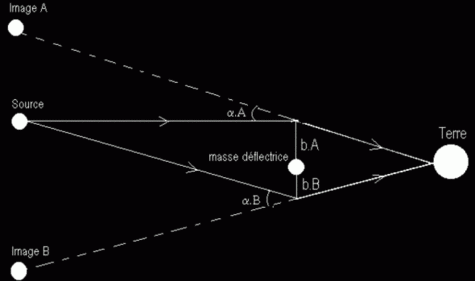-
 Methylation
Methylation
-
 Span-wise ice accretion
Span-wise ice accretion
-
 Object-oriented language
Object-oriented language
-
 Astronautics
Astronautics
-
 Eluvial deposit
Eluvial deposit
-
 Anovulation
Anovulation
-
 Pluripotency
Pluripotency
-
 Mimivirus
Mimivirus
-
 Absolute density
Absolute density
-
 Jizz
Jizz
-
 Leukocyte
Leukocyte
-
 Cotyledon
Cotyledon
-
 Column
Column
-
 Koua river prawn
Koua river prawn
-
 True coordinates
True coordinates
-
 Oven
Oven
-
 Seminal receptacle
Seminal receptacle
-
 Automaton
Automaton
-
 Constellation of Capricorn
Constellation of Capricorn
-
 Contraceptive vaginal ring
Contraceptive vaginal ring
-
 Playlist
Playlist
-
 Gynaecomastia
Gynaecomastia
-
 Cilia
Cilia
-
 Transient Ischaemic Attack
Transient Ischaemic Attack
-
 Rootkit
Rootkit
-
 Crookes tube
Crookes tube
-
 Endocarditis
Endocarditis
-
 MEMS
MEMS
-
 Centrex
Centrex
-
 Virtual universe
Virtual universe
Gravitational lens
One of the first phenomena predicted by general relativity, and which greatly contributed to its acceptance, was the diversion of light, also known as "gravitational lensing". In the neighbourhood of a black hole this phenomenon is extremely strong, but it is not this which is the best evidence for their existence. In fact, active black holes surrounded by large quantities of matter may be the easiest to observe, but around them the diversion of light is difficult to show because of the accretion disk and the complexity of the emitted radiation.
Historical perspective
Einstein, in his theory of general relativity, told us that light rays are diverted near massive objects.
• In a similar fashion to how an image is deformed when light rays are diverted by a glass lens in their path, it should be expected to observe a deformed image of stars when there is a massive object such as a black hole or a galaxy in their direction.
• The theory was first experimentally tested in 1919. During a solar eclipse, Arthur Eddington observed a star that is normally located behind the Sun. The measurement of the diversion confirmed Einstein's predictions. The Sun was causing the first observed gravitational mirage.
• In 1937 Einstein returned to the subject describing Einstein's rings: when two sufficiently distant stars are aligned with the Earth, the furthest star, the source, is seen as a ring surrounding the nearer star, which is called a gravitational lens. When the source is only slightly offset from the Earth-lens axis, multiple images of the source can be observed.
 A simple model of a gravitational lens: the observer sees 2 main images of the source on either side of the lens (the deflecting mass). The alpha angle of diversion is 4G.M/(b.c²).
A simple model of a gravitational lens: the observer sees 2 main images of the source on either side of the lens (the deflecting mass). The alpha angle of diversion is 4G.M/(b.c²).
Latest
Fill out my online form.



